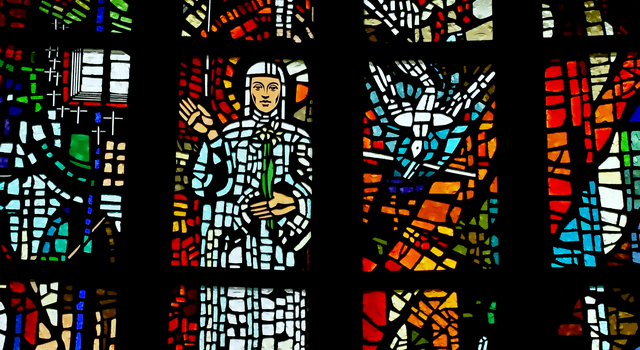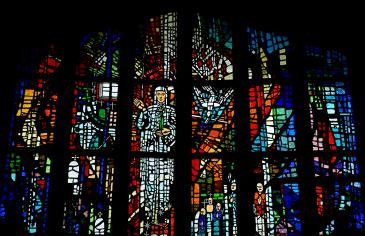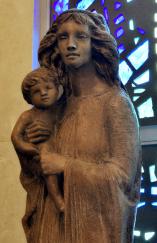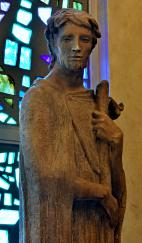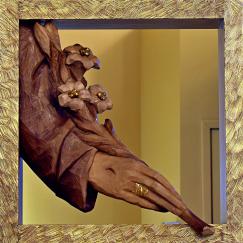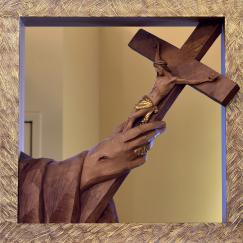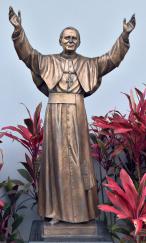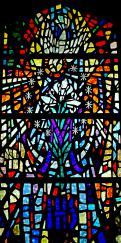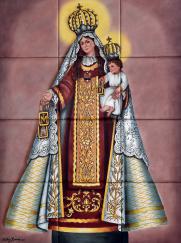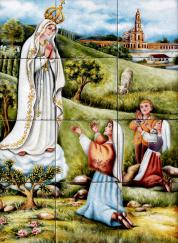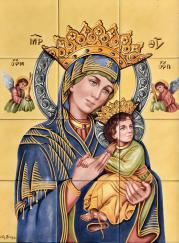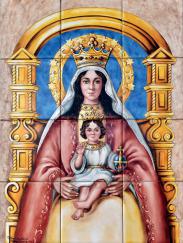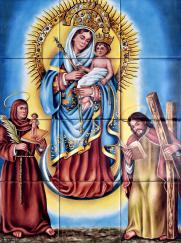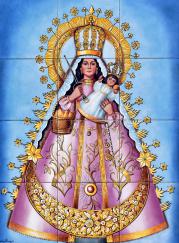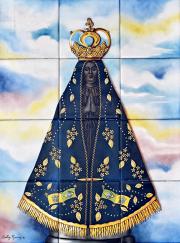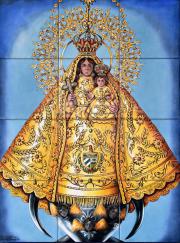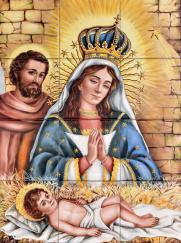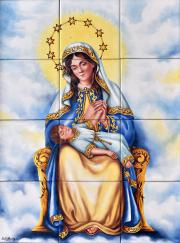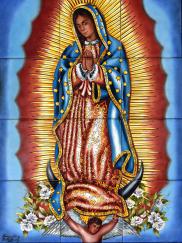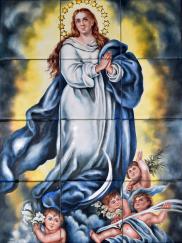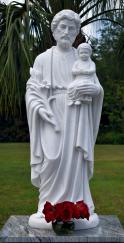By Jim Davis - Florida Catholic
Photography: Jim Davis
MIAMI | Few people have talked back to a pope, especially if they were medieval women. But St. Catherine of Siena did.
A mystic, a diplomat and a relief worker, Catherine counseled leaders, promoted peace and yes, advised popes. And she still inspires many through her literally visionary writings.
Quite a list of deeds for someone who lived only 33 years.
Caterina Benincasa was born in 1347 into a lower middle-class family in Tuscany. She was one of 25 children in her family, many of whom died in childhood.
But she stood out for her intense spirituality. Even at the age of 7, she had a vision of Jesus seated in glory, prompting her to consecrate her life to him. It was the first of many visions she would have.
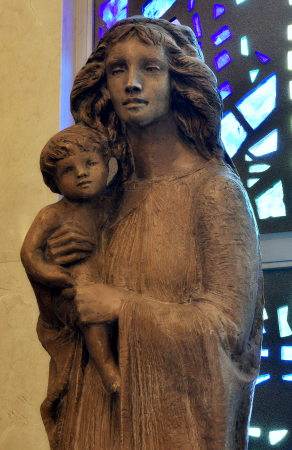
Photographer: Jim Davis | FC
Statue portrays a heroic-looking Mary with wind-blown hair ...
Catherine was also known for a stubborn streak. When she was 16, a sister died, and their mother tried to get Catherine to marry the widower. She not only refused, but began fasting and even had her hair cut short to look less attractive. Her parents finally gave in, allowing her a room in the basement for prayer and meditation.
At 18, Catherine joined a lay order of Dominicans, preferring to live at home rather in a convent. She often visited the sick, even those ill with the plague known as the Black Death. The arrangement sometimes annoyed the family when Catherine often gave away their food and clothing to the poor.
She had a pivotal vision at the age of 21, calling it her “mystical marriage” to Jesus. She even said he gave her a ring, which only she could see. Another time she said she received the stigmata – the “wounds of Christ” – which appeared on her body only after her death.
In her 20s, Catherine went into trances after taking Holy Communion, holding what she called dialogues with God. Her fellow Dominicans wrote down her ecstatic utterances, which were published in 1370 as The Dialogue of Divine Providence.
Her blend of charm, spirituality and determination drew her into correspondence with princes, artists, nobles and papal legates. She sought to broker peace among warring city-states around Italy. She also lobbied for the crusade against the Turks and visited a condemned prisoner, hoping to secure his spiritual salvation.
Catherine’s best-known episode came when she asked Pope Gregory XI to leave Avignon, France, where popes had been ruling in absentia since 1309. She wrote him, then visited there for three months, urging him to return to Rome.
“Respond to the Holy Spirit, who is calling you!” Catherine audaciously said in a letter to the pope. “Up, father, like a man!” she wrote in another, asking him to ignore naysayers.
When Gregory demurred, Catherine shocked him by reminding him about a promise he made – to return the papacy to Rome if he were elected pope – a promise he had told no one but God. He finally kept that promise in 1377.
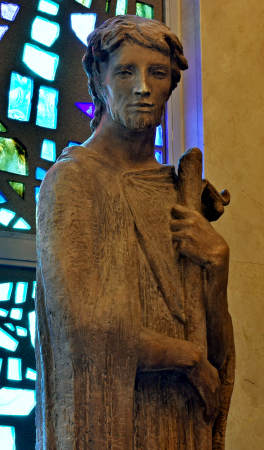
Photographer: Jim Davis | FC
... while Joseph looks as if he's just reached manhood.
Returning to Siena, Catherine founded a monastery and fostered a spiritual revival. But Gregory wasn't finished with her yet. In early 1378, he asked her to try to make peace between the Vatican and the city-state of Florence, an unsuccessful project that nearly got her assassinated.
After Gregory’s death, two factions supported competitors to the papal throne. Urban VI called on Catherine to negotiate with princes and Church leaders to legitimize his election.
She remained in Rome for her last couple of years, still serving the sick and poor despite her own failing health. After a three-month illness, she died in 1380, surrounded by followers.
Catherine even earned the respect of popes long after her death. In 1461 Pius II canonized her, and Pius IX declared her a patron saint of Rome a century later. Her feast day is April 29.
The honors continued in the 20th century. In 1939, Pope Pius XII made her a co-patron of Italy, along with Francis of Assisi. In 1970, Paul VI named her a Doctor of the Church, a source of especially authoritative Catholic teaching.
Finally, in 1999, John Paul II proclaimed Catherine a co-patron of Europe, along with five other saints. (The others are Benedict, Cyril and Methodius, Bridget of Sweden, and Teresa Benedicta of the Cross.)
In an audience in 2010, Pope Benedict XVI offered some takeaways on Catherine’s life. He said she saw Christ as a “bridge” between earth and heaven, which could be navigated through virtue and love for God. She said everyone could learn to love like Christ through prayer, the sacraments and meditation on the Word of God, Benedict said.
Her namesake church in Miami was launched in 1968 to serve the new white-collar residents who were moving into the Kendall area. The congregation worshiped at a high school while planning construction of a church, a school, a rectory and a parish hall. The parish finally got its own church home in 1974.
Lay leaders soon emerged in the Cursillo, music and religious education ministries. Other church organizations include Respect Life, Knights of Columbus and a St. Vincent De Paul Society.
Over the 1980s and 1990s, St. Catherine emphasized evangelization as the Hispanic community grew. The church has also developed outreaches to the homebound, a liturgical service at a nursing home, and Angel Tree, a project to donate Christmas gifts to children of the incarcerated.
Growth brought multiplication as well, with St. Catherine birthing Good Shepherd, St. John Neumann and Our Lady of Lourdes churches.

Photographer: Jim Davis | FC
The star of Bethlehem points to the creche in the Epiphany-themed gable window at St. Catherine.
